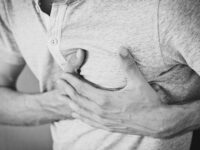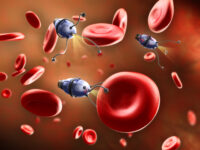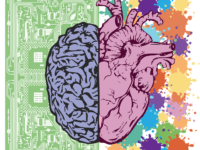We’ve all seen it. We see it on street corners, subway stations, in shelters. It runs rampant through cities, plaguing communities, friends, and families. Addiction is everywhere, and it clings to its victims, taking over their lives and wiring itself deep into their neural pathways, making itself the sole focus of their attention.
Our brains have this incredible ability to change, adapt, and grow. Like paths, the more “traveled” certain modes of thinking or behaviors are, the easier they become to access. Similarly, the more utilized certain pathways and their associated neurotransmitters — the chemical molecules that turn them on — are, the more dependent the brain becomes on them. This is where the reward pathway, dopamine, and addiction come in.
Like paths, the more “traveled” certain modes of thinking or behaviors are, the easier they become to access.
There are many classes of drugs used in the streets, in homes, or prescribed as medications. As the drugs pulse through the user’s veins, there is a responding pulse of neurotransmitters released in the brain. These hormones consist of norepinephrine, serotonin, and most importantly, dopamine. All of these drugs lead to an increase in dopamine levels by blocking reuptake, binding to opioid receptors, or inhibiting neural regulatory pathways. This euphoric “high” caused by the increase in neurotransmitters feels good, so good in fact that the brain’s reward pathway “remembers” it. Drug use is reinforced and rewarded by the increase in dopamine. However, over time tolerance develops, and at a certain point the substance is consumed to simply feel normal.
What we don’t see walking down the streets of Massachusetts Avenue are the battles behind the scenes. We don’t see the detox programs, the shelters, the halfway houses — we don’t see the social workers, the clinicians, the case managers, the nurses, doctors, and psychiatrists trying to break the chains of addiction around their clients and patients. We don’t see the battles each person with addiction suffers: childhood abuse, familial patterns of addiction, chronic homelessness, and mental illness. Instead, we see the end result of self-medication and a very real disease — but it isn’t always hopeless.
What we don’t see walking down the streets of Massachusetts Avenue are the battles behind the scenes.
“I want to get clean for my family. I have a new baby on the way, and I’m going to get sober for her. I’m going to be the father I didn’t have.”
I work at Pine Street Inn as part of the Men’s Stabilization Program. Homeless men pass through here on their road to recovery. They come to us from detoxes, a grueling process that gets them off drugs and to stability.
“My mom. She has always believed in me, always supported me. I’m getting clean for her, but more importantly myself. I want to be able to take care of her, like she did for me.”
Clients come here for a variety of reasons: personal, financial, situational. Many of the men have been here two, four, even six times. Relapse is a regular part of recovery, as both the harm reduction model and addiction research suggest. Harm reduction aims to keep user practices safe, minimizing risk of disease and infection until the individual is ready to recover. Addiction research shows that environmental stimuli, periods of stress, or re-exposure to the drug can cause relapse. As such, many people with substance use disorders cycle between being clean, and returning to their former ways.
Many people with substance use disorders cycle between being clean, and returning to their former ways.
“I’m really lucky to have an incredible support network. Some of the guys here, they don’t have that. But I have friends, family, calling in to check on me all the time.”
What I have seen in my limited time as a substance abuse case manager is that the clients coming in with well-established support networks tend to do better throughout the process. Even the communities and partnerships built between men in the program are significant. If someone feels like giving up, feels like leaving, the support from other clients and the staff will often keep them in the program and the fight for sobriety. Human companionship and comradery is obviously vital in the battle between relapse and recovery, but is there a scientific reason for this?
Research coming out of the lab of Dr. Lisa Feldman Barrett at Northeastern University indicates there might be. Similar to how the reward pathway reinforces substance use, it can also reinforce human connection. Their study utilized cutting edge technology that demonstrated an increase in dopamine levels in the brain with mother-infant bonding. This shows a connection between social affiliation and dopamine. Comparable research conducted by a lab at University of Massachusetts Medical School demonstrated that pup suckling in mice activates the same dopaminergic pathway relating to reward and motivation as cocaine. While this research does not draw a clear connection between addiction, dopamine, and bonding, it does hint at a physiological basis for the effectiveness of close social networks in combating addiction. This raises the question: If drugs are addictive because they utilize the same reward pathway as human connection, then can social connection be harnessed as a powerful therapeutic agent in combating substance abuse?
Drug Discovery Today. Disease Models (2008). DOI:10.1016/j.ddmod.2009.03.001
Proceedings of the National Academy of Sciences of the United States of America (2017). DOI:10.1073/pnas.1612233114
Journal of Clinical Psychology (2010). DOI:10.1002/jclp.20669
Shanghai Archives of Psychiatry (2014). DOI:10.3969/j.issn.1002-0829.2014.02.002
Journal of Neuroscience (2005). DOI: 10.1523/JNEUROSCI.3156-04.2005
Image source: Pixabay.






